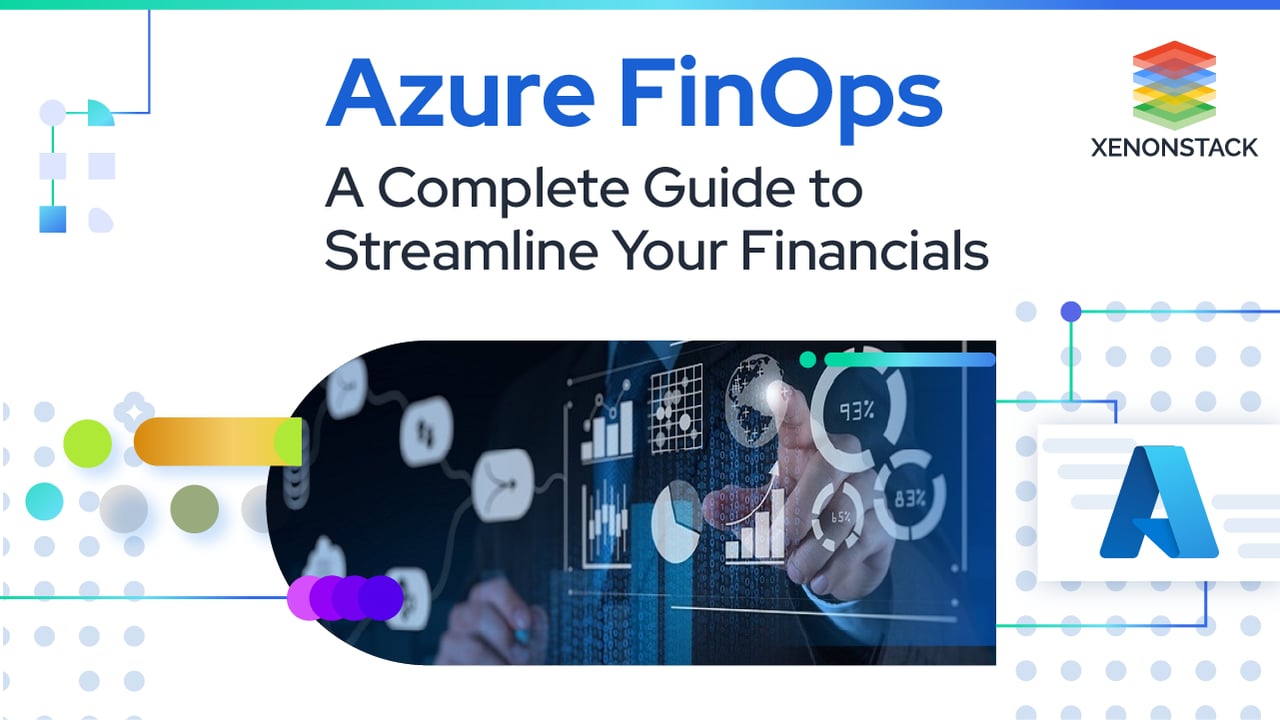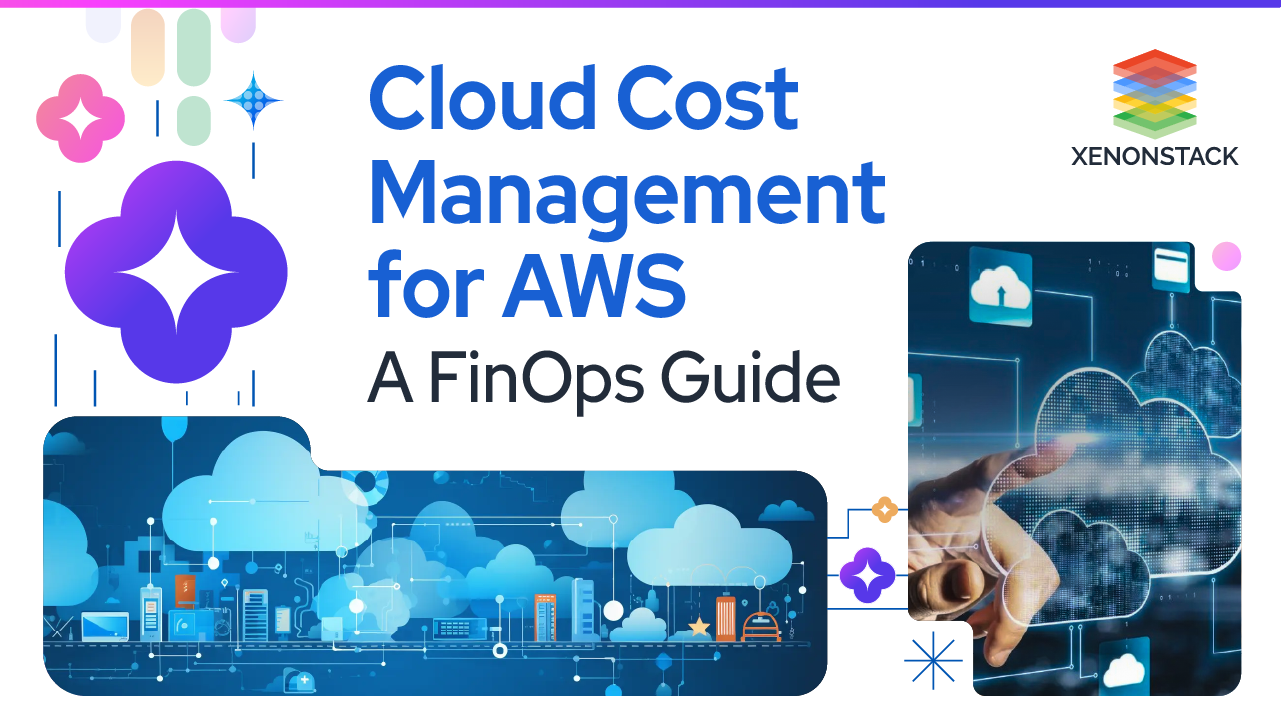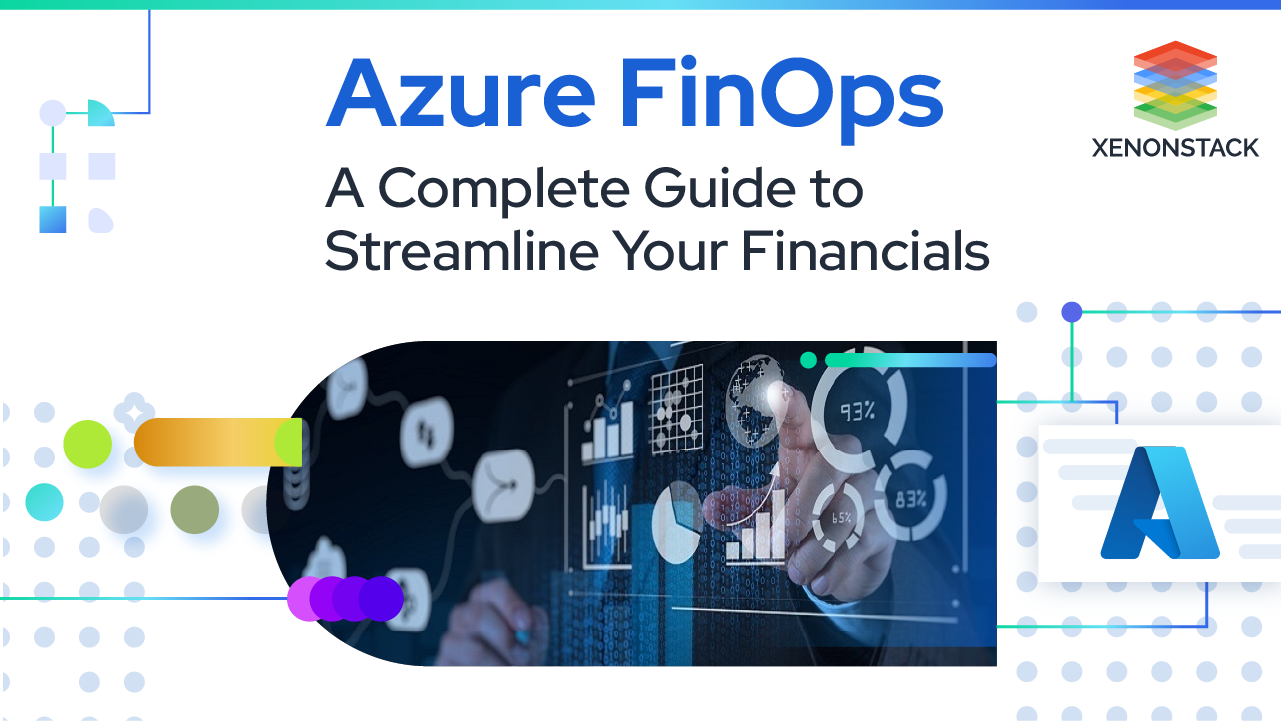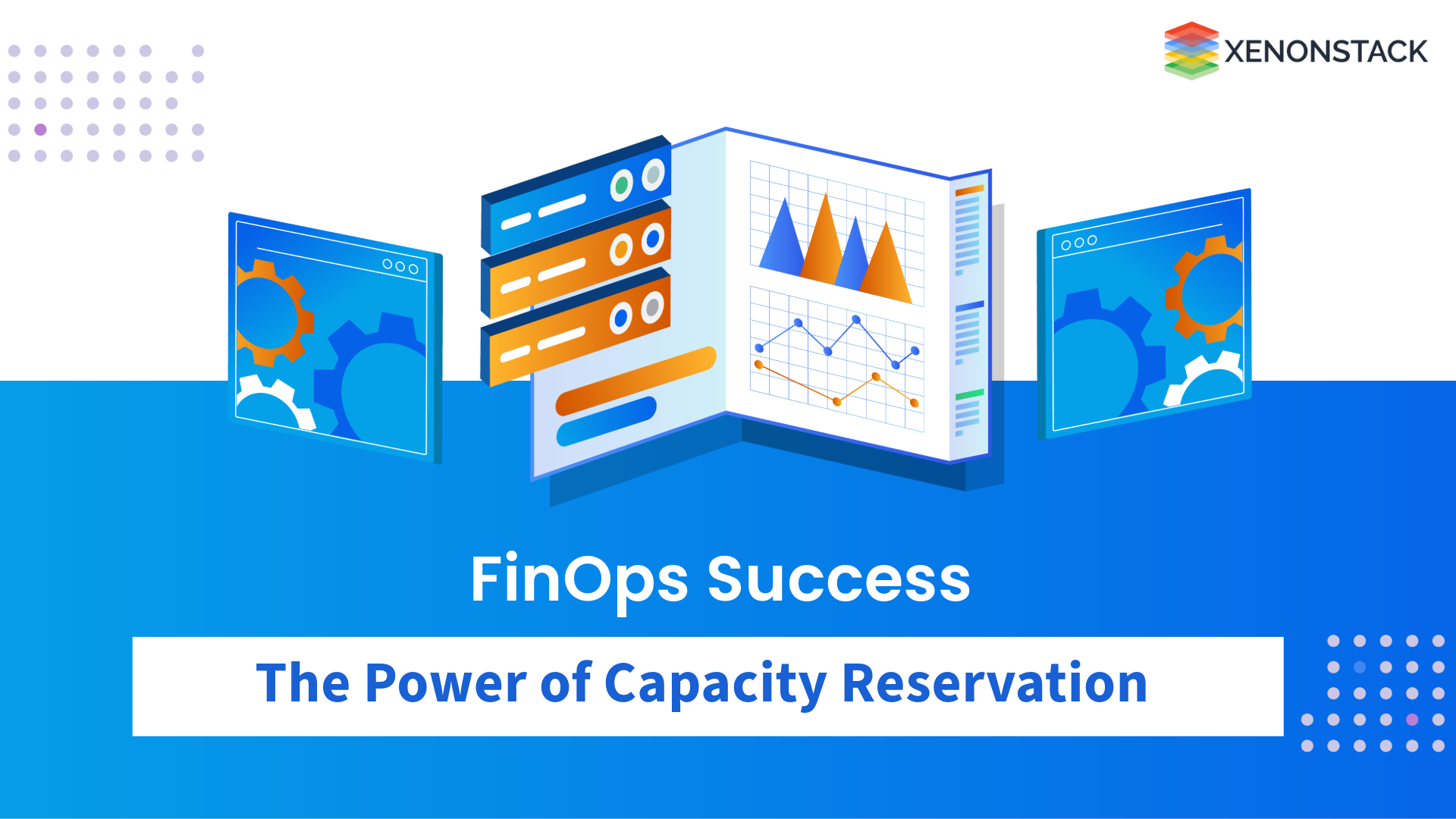
Cloud computing offers flexibility and scalability, making it indispensable for several organizations. However, it also carries the possibility of incurring high costs. Although cloud computing has become a crucial element for numerous organizations, its flexibility and scalability come with the potential for increased cloud costs. If you're not careful, your cloud spending can quickly spiral out of control.
That's where FinOps comes in. FinOps is a cloud cost management discipline that helps organizations optimize their cloud spending. By following FinOps principles and practices, you can ensure you get the most value from your cloud investments.
Utilizing cloud services requires a new approach to resource allocation and cost management, which impacts budgeting and financial oversight. Although managing the cost model of cloud services can be challenging, it offers enhanced control and transparency over expenditures.
What is FinOps?
FinOps is an operational framework and cultural practice designed to maximize the business value of the cloud, enabling timely, data-driven decision-making and fostering financial accountability through collaboration among engineering, finance, and business teams.
At its core, FinOps is a cultural practice that empowers teams to manage cloud costs effectively. It involves everyone taking ownership of their cloud usage, guided by a centralized group that upholds best practices. Cross-functional teams—spanning Engineering, Finance, Product, and more—collaborate to accelerate product delivery while simultaneously achieving greater financial control and predictability.
FinOps encompasses various business aspects that interact with cloud services, including engineering, finance, product development, procurement, and leadership.
Trade-Offs and the FinOps Triangle
Cloud computing is a complex entity that encompasses individuals, procedures, and technology. The FinOps approach directs efforts toward optimizing the utilization of cloud resources.

To effectively manage costs, trade-offs need to be considered, and a balance between the company's objectives, such as speed (time to market), quality (performance, reliability, availability), and expenses, needs to be struck.

FinOps Principles About Azure
FinOps is a discipline in cloud financial management that enables organizations to optimize business value through collaboration among various stakeholders, such as finance, IT, leadership, and engineering. It leverages the cloud's variable cost model.
The below solutions will serve as the means to execute the FinOps principles effectively.
Principle 1: Team Collaboration
Collaboration within an organization is essential for enhancing practices, increasing efficiency, and fostering innovation. In the context of FinOps, various teams, such as engineering, finance, technology, and business, collaborate to share responsibility for cloud management.
Key capabilities
-
Establish a culture of FinOps: Cultivate a sense of responsibility within the organization to emphasize that effective cloud cost management involves utilizing FinOps to enhance the generation of business value.
-
Establish a structure for FinOps decision-making and accountability: Clearly outline roles and tasks, assign responsibilities, and pinpoint gaps in cloud cost management across teams.
-
Optimize commitment-based discounts: To fully utilize these discounts, teams must work closely together to coordinate forecasting and planning efforts.
Key milestones

The following table establishes the approach for adopting FinOps's culture of collaboration in an organization using its three phases: Crawl, Walk, and Run.
Adopting these principles with Microsoft solutions

Microsoft upholds these FinOps principles through various solutions:
-
Microsoft Cost Management: Determine whether individuals from business, engineering, and finance teams should be included in budget alerts and identify suitable automation. Enable data visibility to facilitate collaboration and establish a centralized team.
-
Azure Policy: Facilitate the enforcement of organizational standards and evaluate compliance on a larger scale.
-
Microsoft Power BI: Generate, distribute, and utilize business insights that optimally serve your role and requirements.
-
Azure Monitor Workbooks: Gain valuable insights into cost optimization and effectively manage Azure resources that may impact expenses.
-
Azure Advisor: Analyze resource configuration and usage telemetry to receive recommendations for enhancing the cost-effectiveness, performance, reliability, and security of Azure resources.
-
Microsoft Azure learning paths: Enhance your productivity and enable your organization to achieve more through acquiring new skills with Microsoft Certifications.
Principle 2: Decisions are driven by the business value of the cloud
Teams use real-time data to impact cloud spending and make data-driven decisions. By applying cloud unit economics, companies can define and monitor business value metrics, showcasing the impact of decision-making. This helps organizations understand the relationship between cloud spending and business growth.
Key capabilities
-
Monitoring resource usage: Tracking the utilization of resources to ensure that the cloud costs are justified by the business value they provide.
-
Analyzing data: Utilizing data to establish a reporting system that enables real-time insights for cost allocation, optimization, and decision-making based on value.
- Calculating costs per unit: Creating metrics that uncover the business value through cloud unit economics.
Key milestones
The following table establishes the approach for adopting FinOps cloud business decision-making in an organization using the three phases of FinOps: Crawl, Walk, and Run.
Adopting this principle with Microsoft solutions
Microsoft provides a range of solutions to support value-based decision-making. These include:

-
Microsoft Cost Management: Monitor and track usage patterns to optimize costs and gain valuable insights.
-
Microsoft Power BI: Access real-time analytics and generate reports for data-driven decisions.
-
Well-Architected Review: Tailored assessment with optimization recommendations based on the Well-Architected Framework.
-
Azure savings offers: Pricing benefits and savings plans to save costs while leveraging Azure's capabilities.
-
Azure Advisor: Actionable recommendations to optimize Azure resources across multiple dimensions.
-
Microsoft Azure learning paths: Acquire new skills and certifications to increase productivity and achieve more with Microsoft technologies.
Principle 3: Taking ownership of cloud usage
When costs are not appropriately distributed, there is a lack of comprehensive understanding regarding the true costs and cost overruns.
Through FinOps, the responsibility for usage and cost must be decentralized to the developers and engineers who are accountable for constructing cloud resources.
Key capabilities
-
Resource optimization: Monitoring resource utilization to ensure costs align with performance and quality metrics.
-
Expense distribution: Allocating cloud service invoices among different IT groups using a consistent hierarchy of accounts.
-
Management of shared expenses: Dividing shared costs to understand the true cost of products.
-
Chargeback and financial integration: Automating expense charging to specific business units through integration with internal financial tools.
Key milestones
The following table establishes the approach for decentralizing ownership of cloud usage in an organization using FinOps's three phases: Crawl, Walk, and Run.

Adopting this principle with Microsoft solutions
Microsoft supports this segregated ownership principle with the following solutions:

-
Microsoft Cost Management simplifies the task of distributing responsibility for cloud costs. It provides detailed reports to monitor and analyze cloud spending, manage budgets, export data, and optimize costs.
-
Azure Policy establishes guardrails for better control and optimization of cloud expenditure, ensuring maximum value from your investment.
-
Microsoft Power BI visualizes and shares cloud usage data through customized reports tailored to your KPIs, enabling informed decision-making based on accurate insights.
-
Azure Advisor offers personalized recommendations to optimize resources, reduce costs, and enhance cloud investment efficiency and performance.
-
Microsoft Azure learning paths and certifications empower organizations to acquire new skills and boost productivity, helping them achieve their goals effectively.
Principle 4: Reports should be accessible and timely
Accessible and timely reports improve efficiency by enabling quick feedback loops, particularly in analyzing cloud cost and usage data within FinOps.
This relies on the adequate ingestion and normalization of data, focusing on promptly processing and sharing cost data.
Key capabilities
-
Data ingestion and normalization transform data sets to create a centralized repository for cloud cost management.
-
Forecasting helps plan for future changes in cloud infrastructure and application lifecycles to make informed budget decisions.
-
Managing anomalies involves detecting, identifying, and minimizing unexpected cloud costs to prevent adverse impacts on business operations.
Key milestones
The following table establishes the approach for generating reports of cloud usage in an organization using FinOps's three phases: Crawl, Walk, and Run.

Adopting this principle with Microsoft solutions
Microsoft supports this FinOps principle with the following solutions:

- Microsoft Azure Cost Management helps monitor, allocate, and optimize costs for Cloud workloads.
- Use Microsoft Power BI for efficient analysis and oversight of Azure costs.
- View daily breakdowns of Azure usage and charges in the Azure portal.
- Improve skills and productivity with Microsoft Azure learning paths for valuable certifications.
Principle 5: Benefiting from the variable cost model of the cloud
Resource provisioning in a pay-as-you-go manner allows for flexibility in budget allocation and adjustment based on evolving business needs. Operational expenses can be minimized by reducing unused capacity and the workforce required to maintain system infrastructure.
Key capabilities
-
FinOps Education: Providing training and educational opportunities to accelerate FinOps adoption.
-
Cloud Budget Projection: Understanding how changes in cloud infrastructure can impact budgets and future investment decisions.
-
FinOps Accountability Framework: Establishing roles and responsibilities for decision-making and accountability in cloud management.
Key milestones

Adopting this principle with Microsoft solutions
Consider Microsoft cost management solutions to help your organization take advantage of the variable cost model.

-
Microsoft Cost Management allows you to effectively monitor and analyze usage patterns across various resources, enabling you to optimize costs consistently.
-
Discover Azure savings offers that provide pricing benefits and savings plans, including Reserved Instances, Saving Plan for Compute, and Azure Hybrid Benefit.
-
Leverage Azure Advisor to receive actionable recommendations that help optimize your Azure resources for reliability, security, operational excellence, performance, and cost.
-
Enhance your productivity and empower your organization to achieve more with Microsoft Certifications by exploring the comprehensive learning paths offered by Microsoft Azure.
Azure Cost Optimization with FinOps: Best Practices
Now, let's explore a range of best practices and strategies for optimizing your cloud costs on Azure using FinOps:
Set Clear Budgets and Policies
Define clear budget limits for your Azure resources to prevent overspending. With Azure Cost Management, you can establish budget limits for your Azure resources, which helps prevent overspending. Azure Cost Management allows you to set budgets and configure alerts when spending approaches or exceeds these limits. Establish well-defined policies for resource allocation, usage, and de-provisioning. This ensures that resources are not provisioned and left idle, incurring unnecessary costs.
Monitor and Analyze Usage
Track your Azure usage and expenses regularly using Azure Cost Management. Analyze usage patterns to identify underutilized or idle resources. This information empowers you to decide whether to scale, resize, or shut down such resources.
Leverage Azure Cost Management Tools
Make full use of Azure Cost Management's tools, including cost analysis, cost alerts, and the cost explorer. These tools provide detailed insights into your spending patterns. Use Azure Advisor, a tool that offers personalized recommendations for optimizing your Azure resources.
Implement Resource Tagging
Utilize resource tagging to categorize and label your resources. This practice allows better tracking and allocating costs to specific projects, departments, or teams. With tagged resources, you can easily see which areas of your organization are incurring the most costs and make adjustments accordingly.
Embrace Azure Reserved Instances (RIs)
Azure RIs allow you to commit to a one- or three-year term for virtual machines, resulting in significant cost savings compared to pay-as-you-go pricing. Identify workloads with predictable, consistent usage and consider RIs to reduce costs.
Scale Resources Appropriately
Azure provides auto-scaling capabilities, enabling your resources to adjust automatically based on demand. Use this feature to ensure resources are not overprovisioned. Implement Azure Virtual Machine (VM) auto-shutdown policies to turn off non-essential VMs outside working hours.
Optimize Storage and Data
Review your data storage regularly and implement lifecycle policies to move or delete outdated data. To reduce storage costs, utilize Azure Blob Storage Cool and Archive tiers for less frequently accessed data.
Continuous Learning and Training
Through training and continuous learning, keep your team current with Azure best practices, FinOps principles, and cloud cost management. Encourage collaboration between IT, finance, and operations teams to ensure alignment on cost optimization goals.
Right-Size Resources
Continuously assess your resource sizing to ensure that you are not over-allocating resources. Azure Cost Management provides insights into utilizing your virtual machines, helping you right-size them.
Evaluate Third-Party Cost Management Solutions
Consider third-party cost management solutions that can provide additional features and insights beyond what Azure Cost Management offers.
Benefits of Implementing FinOps on Azure
There are many benefits to implementing FinOps on Azure, including:
Improved cloud performance: FinOps can help you to ensure that your cloud resources are being used efficiently, which can improve your cloud performance.
Reduced cloud waste: FinOps can help you reduce the amount of cloud resources you are not using, which can further reduce your cloud costs.
Improved cloud governance: FinOps can help you implement policies and procedures to manage your cloud spending, which can improve your cloud governance.
Challenges of Azure Cloud Costs
Microsoft Azure offers a powerful cloud platform with services like virtual machines, databases, AI, and IoT. However, while flexible, Azure's pay-as-you-go model presents challenges in cost management. Here are the key reasons why optimizing your cloud costs on Azure is essential:
-
Complex Pricing Models: Each of Azure's many services has its pricing model. Understanding these models can be tricky, making it hard to predict costs accurately.
-
Unpredictable Demand: Cloud usage can change significantly, causing cost spikes during high demand and underutilization during off-peak times, potentially leading to budget issues.
-
Lack of Visibility: Many organizations need more transparency in their Azure resources. This lack of clarity can lead to inefficient resource allocation and unnecessary expenses.
-
Inefficient Resource Management: Without proper governance and policies, resources may be provisioned but not de-provisioned when no longer needed. This results in wasted spending on idle resources
-
Limited Budget Control: Failing to set and enforce budget limits can lead to unexpected costs that strain an organization's finances.
Future Trends of Finops for Azure
-
Autonomous Budget Enforcers: Agentic AI will act as real-time financial guardians, dynamically adjusting Azure resources (e.g., scaling down VMs, halting dev environments) to keep spending within budgets—without waiting for human approval.
-
Context-Aware Cost Advisors: Smart agents will continuously analyze workloads, usage patterns, and business goals to provide personalized cost-saving strategies—alerts and actionable recommendations tailored to specific teams or projects.
-
Self-Optimizing Pipelines: AI agents embedded in CI/CD pipelines will auto-evaluate deployments for cost impact, suggest cheaper configurations (e.g., spot instances, reservations), or even block expensive deployments unless justified.
-
Multi-Agent FinOps Teams: Decentralized AI agents will represent finance, engineering, and product perspectives—negotiating trade-offs in real-time (e.g., performance vs. cost) and collaborating on shared FinOps objectives within Azure.
-
Sustainability-Aware Agents: Agents will consider cost and carbon impact when making decisions—prioritizing greener regions, low-power SKUs, or advising on idle resources that affect sustainability goals.
Next Steps with FinOps
Talk to our experts to discover how industries and departments use Agentic Workflows and Decision Intelligence to become decision-centric. Leverage AI to automate and optimize FinOps on Azure, enhancing cost visibility, efficiency, and financial governance.






